In every aviation design bureau there is a story about a statement by the chief designer. Only the author of the statement changes. And it sounds like this: “I have been dealing with airplanes all my life, but I still don’t understand how this piece of iron flies!”. Indeed, after all, Newton's first law has not yet been canceled, and the plane is clearly heavier than air. It is necessary to figure out what force does not allow a multi-ton machine to fall to the ground.
Methods of air travel
There are three ways to travel:
- Aerostatic, when lifting off the ground is carried out with the help of a body whose specific gravity is lower than the density of atmospheric air. These are balloons, airships, probes and other similar structures.
- Reactive, which is the brute force of a jet stream from combustible fuel, which allows to overcome the force of gravity.
- And, finally, the aerodynamic method of creating lift, when the Earth's atmosphere is used as a supporting substance for vehicles heavier than air. Planes, helicopters, gyroplanes, gliders and, by the way, birds move using this particular method.
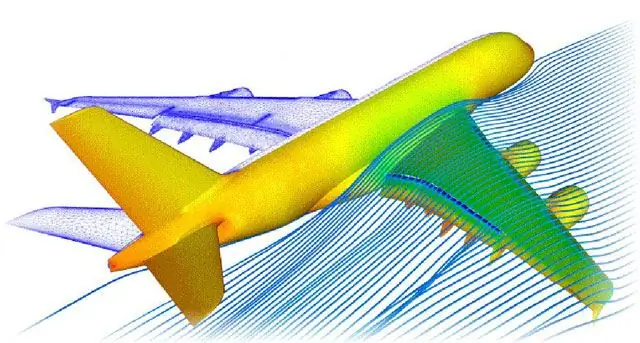
Aerodynamic forces
An aircraft moving through the air is affected by four main multidirectional forces. Conventionally, the vectors of these forces are directed forward, backward, down and up. That is almost a swan, cancer and pike. The force pushing the plane forward is generated by the engine, backward is the natural force of air resistance, and downward is gravity. Well, instead of letting the plane fall - the lift generated by the air flow due to the flow around the wing.
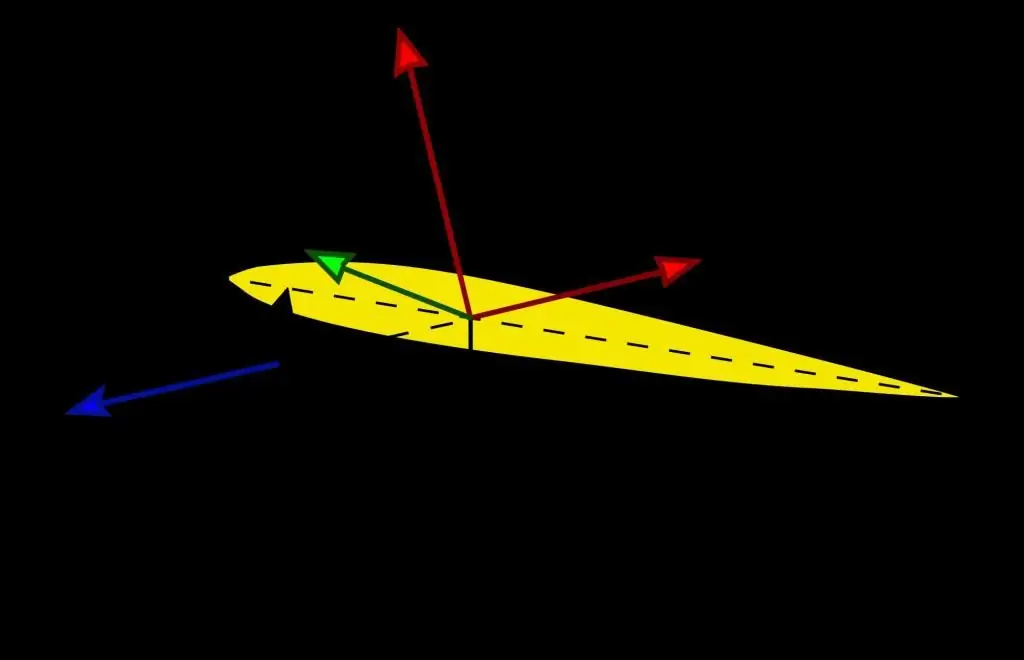
Standard atmosphere
The state of the air, its temperature and pressure can vary significantly in different parts of the earth's surface. Accordingly, all the characteristics of aircraft will also differ when flying in one place or another. Therefore, for convenience and bringing all characteristics and calculations to a common denominator, we agreed to define the so-called standard atmosphere with the following main parameters: pressure 760 mm Hg above sea level, air density 1.188 kg per cubic meter, sound speed 340.17 meters per second, temperature +15 ℃. As the altitude increases, these parameters change. There are special tables that reveal the values of the parameters for different heights. All aerodynamic calculations, as well as the determination of aircraft performance characteristics, are carried out using these indicators.
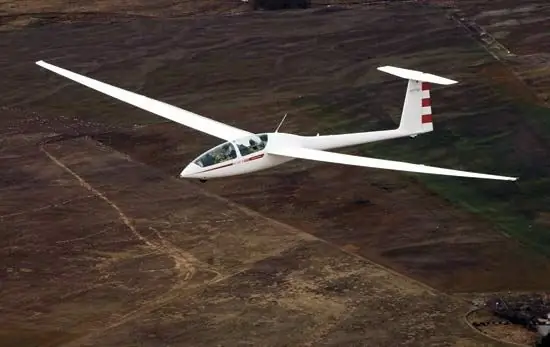
The simplest principle of creating lift
If in the oncoming air flowto place a flat object, for example, by sticking the palm of your hand out of the window of a moving car, you can feel this force, as they say, “on your fingers”. When turning the palm at a small angle relative to the air flow, it is immediately felt that in addition to air resistance, another force has appeared, pulling up or down, depending on the direction of the angle of rotation. The angle between the plane of the body (in this case, the palms) and the direction of the air flow is called the angle of attack. By controlling the angle of attack, you can control the lift. It can be easily seen that with an increase in the angle of attack, the force pushing the palm up will increase, but up to a certain point. And when it reaches an angle close to 70-90 degrees, it will disappear altogether.
Aircraft wing
The main bearing surface that creates lift is the wing of the aircraft. The wing profile is usually curved teardrop shaped as shown.
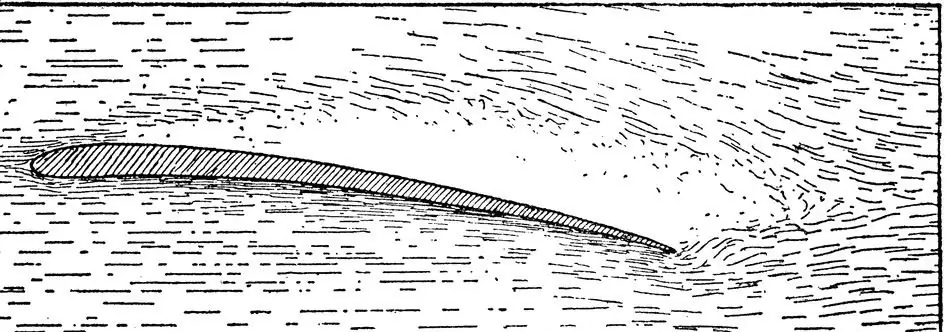
When the air flows around the wing, the speed of the air passing along the upper part of the wing exceeds the speed of the lower flow. In this case, the static air pressure at the top becomes lower than under the wing. The pressure difference pushes the wing up, creating lift. Therefore, to ensure the pressure difference, all wing profiles are made asymmetrical. For a wing with a symmetrical profile at zero angle of attack, the lift in level flight is zero. With such a wing, the only way to create it is to change the angle of attack. There is another component of the lifting force - inductive. She isis formed due to the downward slanting of the air flow by the curved undersurface of the wing, which naturally results in an upward reverse force acting on the wing.
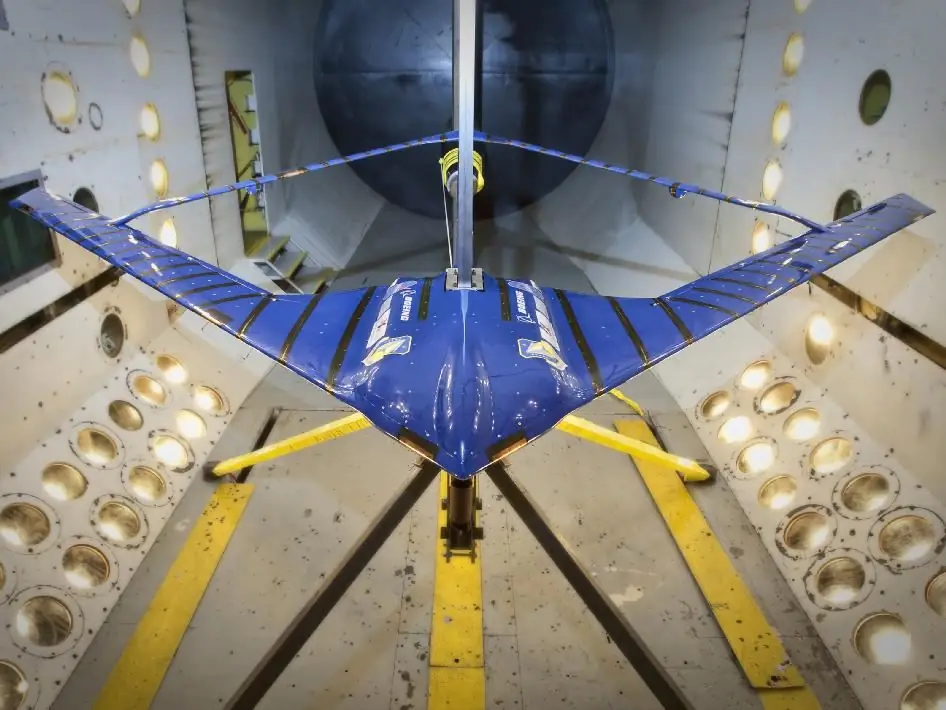
Calculation
The formula for calculating the lift force of an aircraft wing is as follows:
Y=CyS(PV 2)/2
Where:
- Cy - lift coefficient.
- S - wing area.
- V - free stream velocity.
- P - air density.
If everything is clear with air density, wing area and speed, then the lift coefficient is a value obtained experimentally and is not a constant. It varies depending on the wing profile, its aspect ratio, angle of attack and other values. As you can see, the dependencies are mostly linear, except for speed.
This mysterious coefficient
The wing lift coefficient is an ambiguous value. Complex multi-stage calculations are still verified experimentally. This is usually done in a wind tunnel. For each wing profile and for each angle of attack, its value will be different. And since the wing itself does not fly, but is part of the aircraft, such tests are carried out on the corresponding reduced copies of aircraft models. Wings are rarely tested separately. According to the results of numerous measurements of each particular wing, it is possible to plot the dependence of the coefficient on the angle of attack, as well as various graphs that reflect the dependencelift from the speed and profile of a particular wing, as well as from the released mechanization of the wing. A sample chart is shown below.
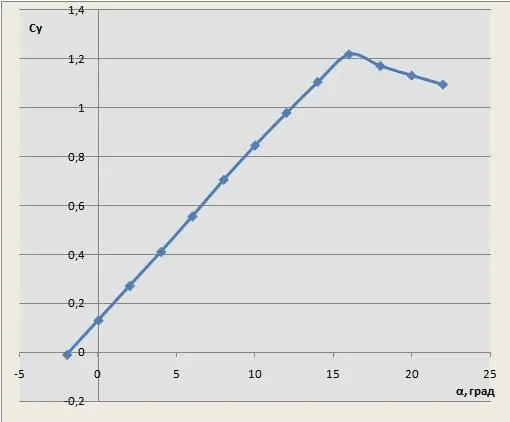
In fact, this coefficient characterizes the ability of the wing to convert the pressure of the incoming air into lift. Its usual value is from 0 to 2. The record is 6. So far, a person is very far from natural perfection. For example, this coefficient for an eagle, when it rises from the ground with a caught gopher, reaches a value of 14. It is obvious from the above graph that an increase in the angle of attack causes an increase in lift to certain angle values. After that, the effect is lost and even goes in the opposite direction.
Stall flow
As they say, everything is good in moderation. Each wing has its own limit in terms of angle of attack. The so-called supercritical angle of attack leads to a stall on the upper surface of the wing, depriving it of lift. The stall occurs unevenly over the entire area of the wing and is accompanied by corresponding, extremely unpleasant phenomena such as shaking and loss of control. Oddly enough, this phenomenon does not depend much on speed, although it also affects, but the main reason for the occurrence of stall is intensive maneuvering, accompanied by supercritical angles of attack. It was because of this that the only crash of the Il-86 aircraft occurred, when the pilot, wanting to "show off" on an empty plane without passengers, abruptly began to climb, which ended tragically.
Resistance
Hand in hand with lift comes drag,preventing the aircraft from moving forward. It consists of three elements. These are the friction force due to the effect of air on the aircraft, the force due to the pressure difference in the areas in front of the wing and behind the wing, and the inductive component discussed above, since the vector of its action is directed not only upwards, contributing to an increase in lift, but also back, being an ally of the resistance. In addition, one of the components of inductive resistance is the force that occurs due to the flow of air through the ends of the wing, causing vortex flows that increase the bevel of the direction of air movement. The aerodynamic drag formula is absolutely identical to the lift force formula, except for the coefficient Su. It changes to the Cx coefficient and is also determined experimentally. Its value rarely exceeds one tenth of one.
Drop-to-drag ratio
The ratio of lift to drag force is called aerodynamic quality. One feature must be taken into account here. Since the formulas for the lift force and the drag force, except for the coefficients, are the same, it can be assumed that the aerodynamic quality of the aircraft is determined by the ratio of the coefficients Cy and Cx. The graph of this ratio for certain angles of attack is called the wing polar. An example of such a chart is shown below.
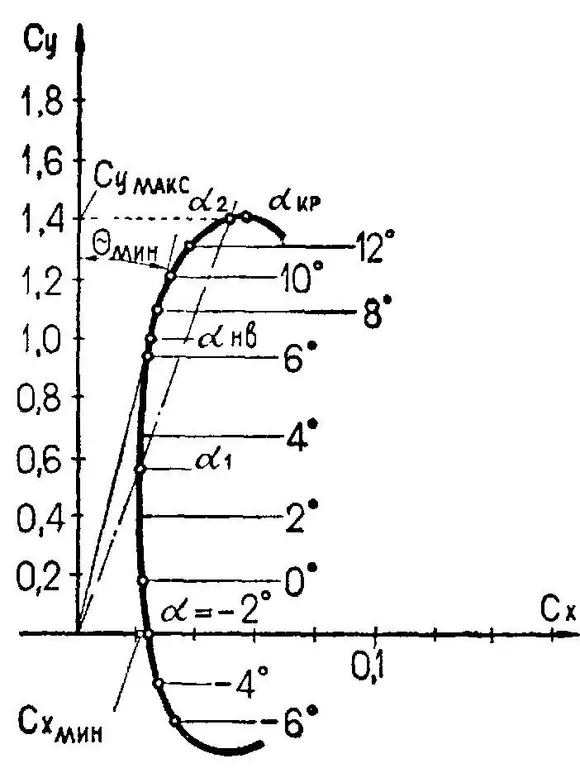
Modern aircraft have an aerodynamic quality value of around 17-21, and gliders - up to 50. This means that on aircraft the wing lift is at optimal conditions17-21 times greater than the resistance force. Compared to the Wright brothers' plane, which scores 6.5, the design progress is obvious, but the eagle with the unfortunate gopher in its paws is still a long way off.
Flight modes
Different flight modes require different lift-to-drag ratio. In cruising level flight, the speed of the aircraft is quite high, and the lift coefficient, proportional to the square of the speed, is at high values. The main thing here is to minimize resistance. During takeoff and especially landing, the lift coefficient plays a decisive role. The speed of the aircraft is low, but its stable position in the air is required. An ideal solution to this problem would be the creation of a so-called adaptive wing, which changes its curvature and even area depending on the flight conditions, approximately in the same way as birds do. Until the designers succeeded, the change in the lift coefficient is achieved by using wing mechanization, which increases both the area and the curvature of the profile, which, by increasing the resistance, significantly increases the lift. For fighter aircraft, a change in the sweep of the wing was used. The innovation made it possible to reduce drag at high speeds and increase lift at low speeds. However, this design turned out to be unreliable, and recently front-line aircraft have been manufactured with a fixed wing. Another way to increase the lift force of an aircraft wing is to additionally blow the wing with a flow from the engines. This has been implemented in the militaryAn-70 and A-400M transport aircraft, which, due to this property, are distinguished by shortened takeoff and landing distances.






